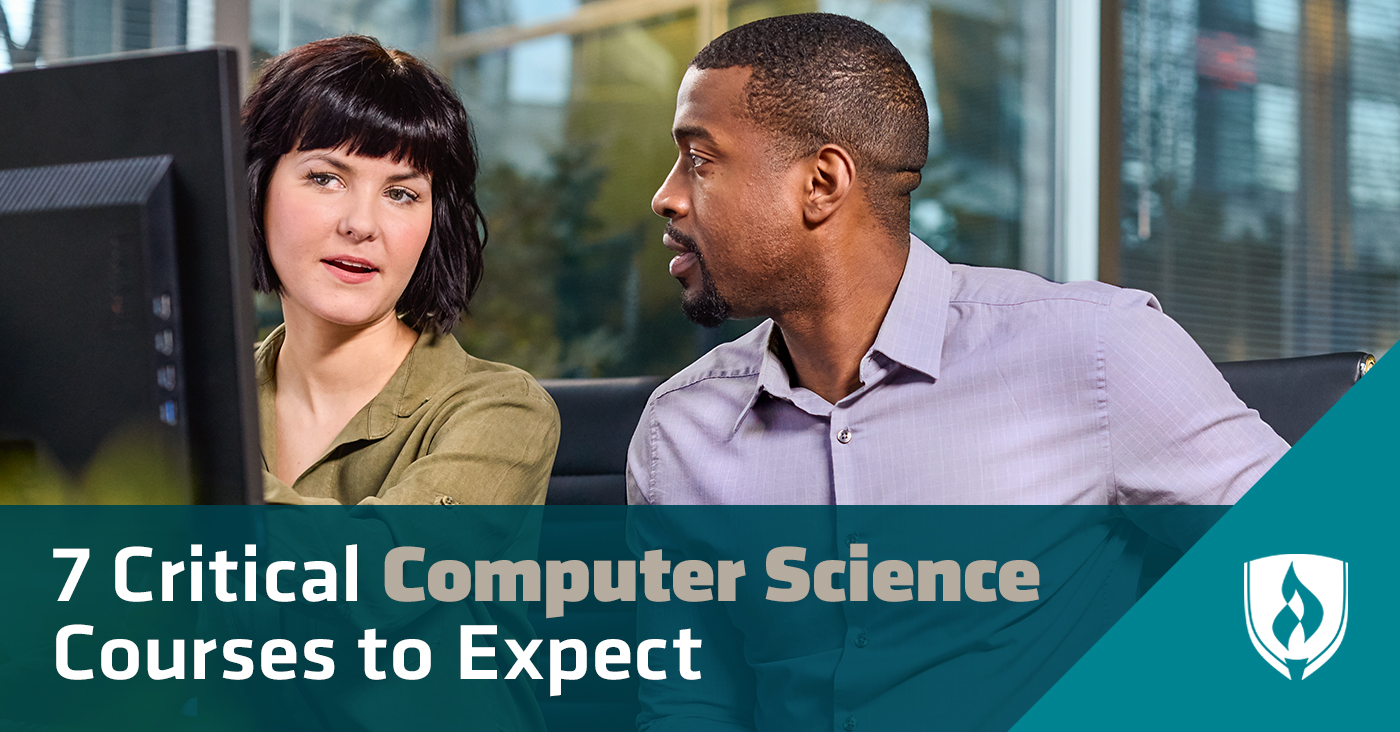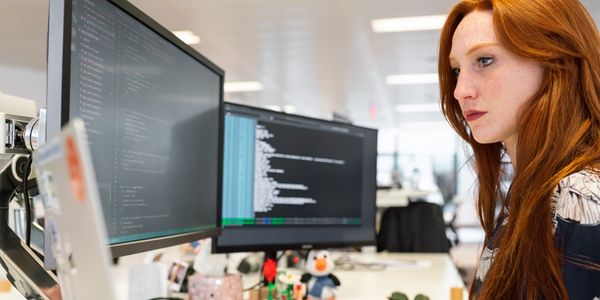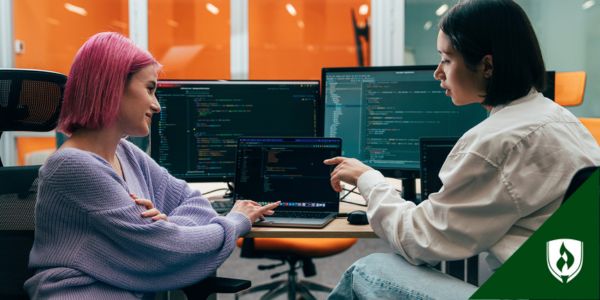
If you’re considering a computer science program, there’s a lot of information worth weighing. Obviously you’ll want to think about big things like the price of the program, the amount of time it will take to complete and the location of where you can complete your classes.
While those factors are definitely of huge importance, so are the courses you’ll take as part of the program. Is it all a bunch of lectures about complex computational theories? Complete “lab” work? Write papers about computer programming?
You want to know that what you’re learning is actually applicable to the modern day workforce. So what can you expect to learn in a computer science degree program? We dove in to take a closer look at seven intriguing courses you’ll find in the Rasmussen University Computer Science program.
7 Computer Science courses you’ll find at Rasmussen University
Considering a Computer Science degree? Read on to get a better feel for what you’ll learn in your Computer Science courses and why this material matters in the real world.
1. Software Engineering
What you’ll learn: This course will introduce students to key software and application development practices. Students will learn about the software development life cycle, how to develop and capture application requirements, and also explore best practices for design, testing, deployment and maintenance procedures. You’ll also learn about the strengths and weaknesses of agile and scrum development approaches and how large software development projects are managed.
Why it matters: If someone asks you to build an application from scratch, would you know where to start? Furthermore, do you know how to approach it efficiently? Like with any big project, it helps to have a process or framework guiding your approach. This course will help you get a better handle on the software development life cycle and how industry professionals approach this complex process.
2. Database Systems
What you’ll learn: Students in this course will develop an in-depth understanding of an essential component of software development—databases. Students will receive an overview of database design and operations and will learn about the differences between relational and non-relational (NoSQL) databases. Additionally, topics like database security and optimal configurations for data integration will be covered.
Why it matters: Databases are an essential element to any application. Applications pull from and write to databases in a wide variety of contexts—whether it’s with important customer information for a mobile commerce app or with inventory management software used to keep track of a multitude of moving parts. Understanding how databases work and the potential strengths and weaknesses associated with different systems will help you avoid processing bottlenecks and other issues that can bog down applications and cause errors.
3. Software Security
What you’ll learn: In this course, students will learn about the importance of security within software and how to properly implement these measures. The curriculum covers data cryptography techniques, secure coding practices, and how to implement software security measures within the software development life cycle and the evaluation of security compliance.
Why it matters: There are a ton of bad actors out there looking for any crack or weakness to exploit. Whether they’re seeking valuable, personally-identifiable information accessed by this software or just trying to break things and cause havoc, it’s important for software developers to play their part by creating secure and stable work products that do their best to keep potential issues at bay.
4. Algorithm and Data Structure Analysis
What you’ll learn: This course covers different types of algorithms—sorting, searching, string matching and graph theoretic—and how they can be used in various computer functions. The course will also equip students with methods for evaluating the effectiveness of different types of algorithms when working with different data sets. Along the way, students will complete projects that give an opportunity to empirically compare and contrast the effectiveness and performance of algorithms.
Why it matters: Part of the beauty of programming is that there are several ways for a computer to produce a desired output. But that doesn’t mean some approaches aren’t more effective or efficient at getting there than others—particularly when asking a computer to process a massive amount of data. Understanding how algorithms work, how to evaluate them and when to apply different approaches can have a profound effect on the overall performance of an application.
5. Quality Assurance in Software Engineering
What you’ll learn: This course will equip students with the skills and knowledge needed to competently conduct quality assurance (QA) duties. Topics covered include configuration management, software testing products, QA processes and techniques, and systematic approaches to detecting, reporting and fixing software issues.
Why it matters: Quality assurance is a crucial step in software development and deployment. Software development teams do their best to make sure the code from their functional focus areas “play nice” with others’ code. But bugs and issues are practically inevitable. That’s where QA comes in—knowing how to properly document and fix issues systematically is a valuable skill.
6. Big Data
What you’ll learn: Students in this course will learn more about how big data solutions are applied today and how to begin developing software solutions that incorporate it. Students will learn more about the infrastructural technologies, architectures and processes used to collect, store, process, analyze and visualize massive amounts of data.
Why it matters: With mobile devices and connected technologies growing more prevalent, the amount of data being captured globally is growing exponentially. This enormous collection of data is like a stockpile of raw material waiting to be refined—and businesses are embracing big data processing to help identify trends and opportunities, among other things. To do this, organizations need computer science professionals who understand what it takes to work with data at a massive scale.
7. E-commerce Development
What you’ll learn: This course teaches students the ins-and-outs of creating solutions for e-commerce systems. As part of the coursework, students create the elements of a fully functional e-commerce website—including front-end development, database design and configuration, back-end development and deployment of an interactive site.
What it matters: Websites are often the primary point of contact a retailer makes with its customers. These sites are an incredibly valuable and important asset for businesses, who want to make sure they are dependable and work the way they’re intended to. This course provides a very practical application of computer science and web development skills—experience that could be very appealing to potential employers.
Are you ready to take on these Computer Science courses?
The Computer Science program at Rasmussen University is designed to provide graduates with a highly practical foundation of skills and hands-on, project-based experience. Graduates will be able to confidently hit the ground running in their job search and step into a variety of software development and computer science-related careers.
Now that you know more about some of the courses you can expect to encounter in this program, are you ready to conquer the curriculum? Visit the Rasmussen University Computer Science degree page to learn about the other important details of this program.




